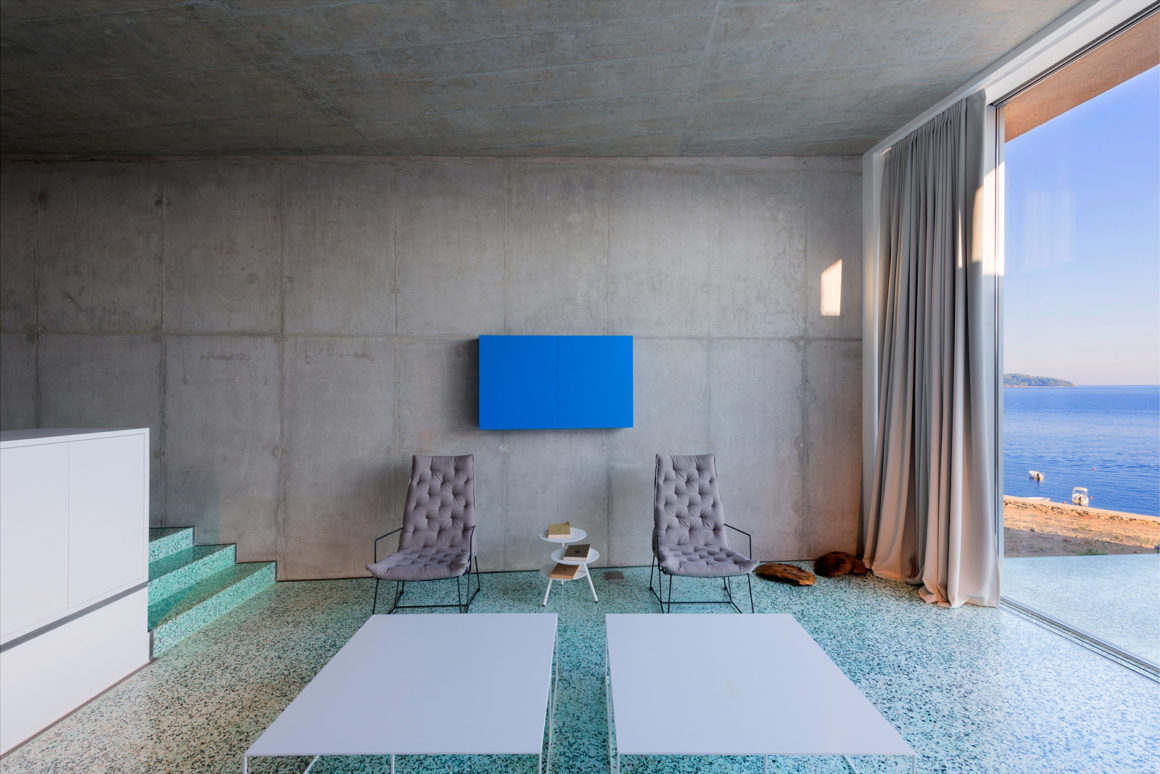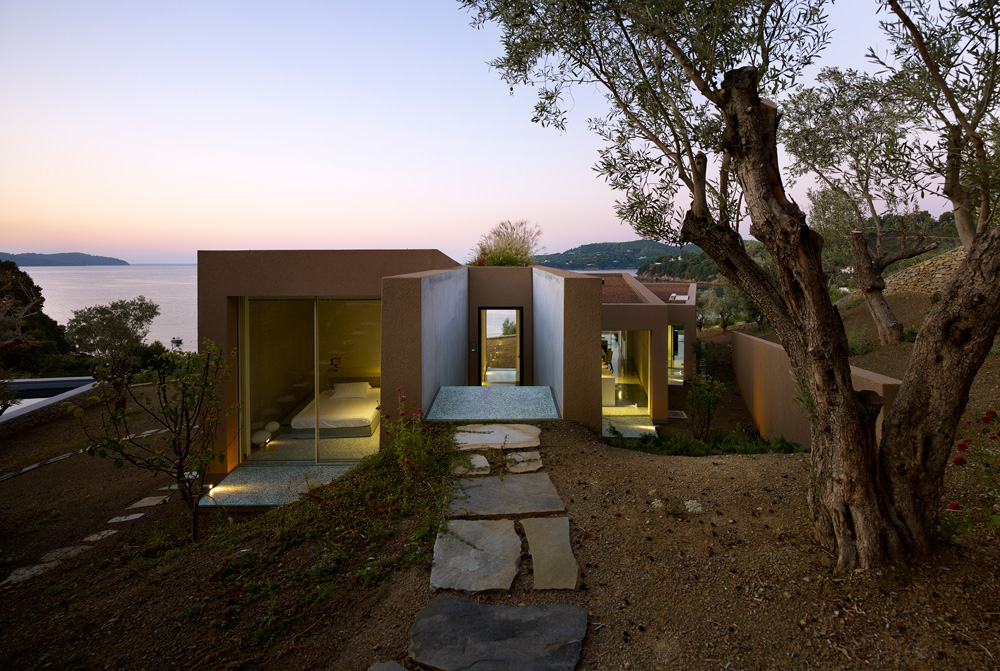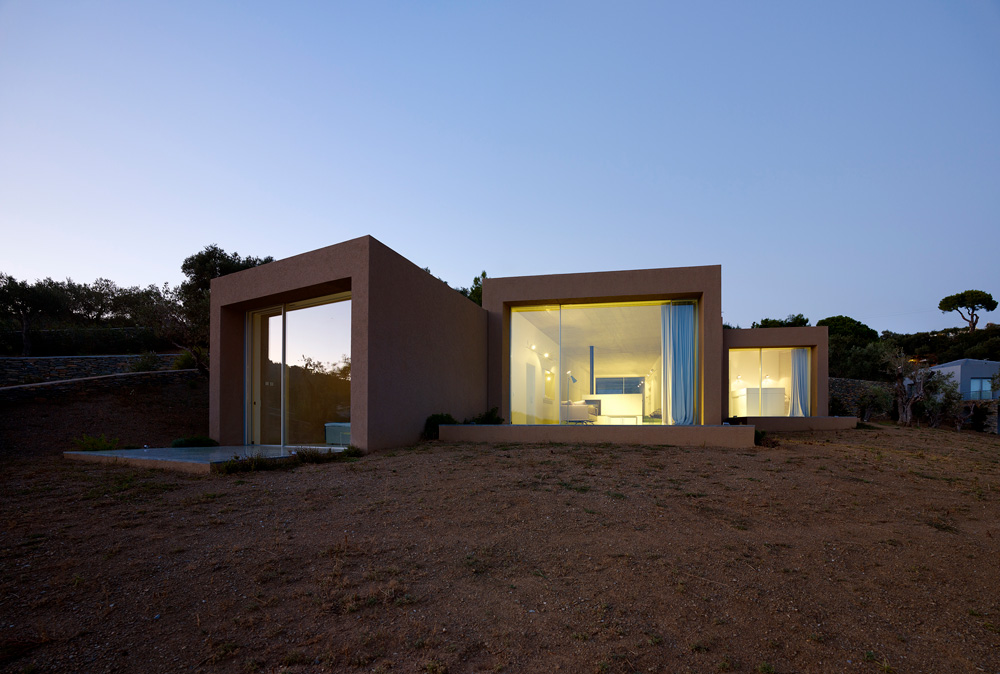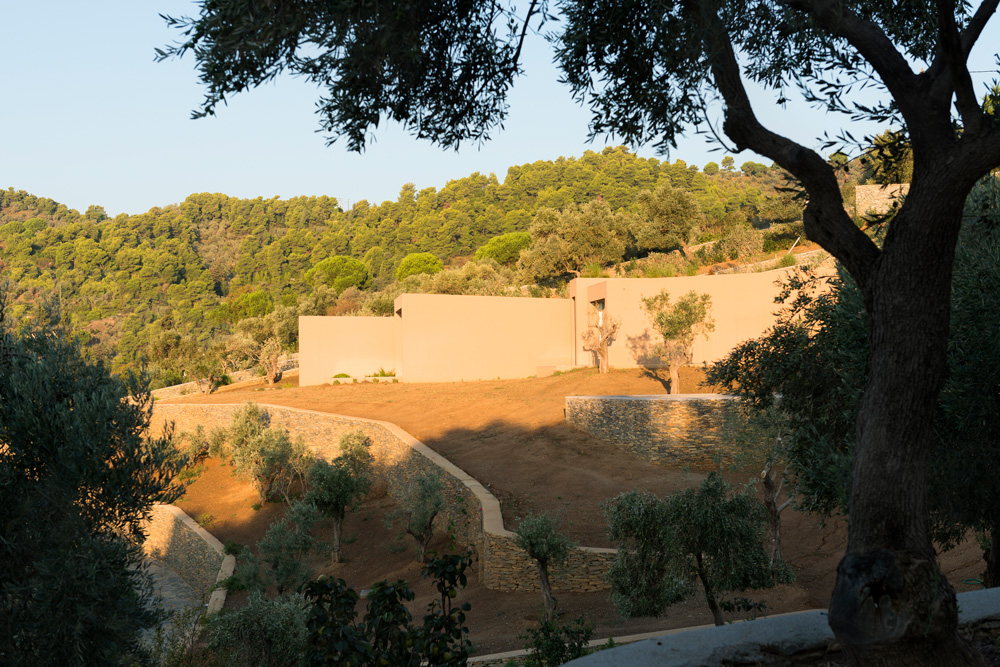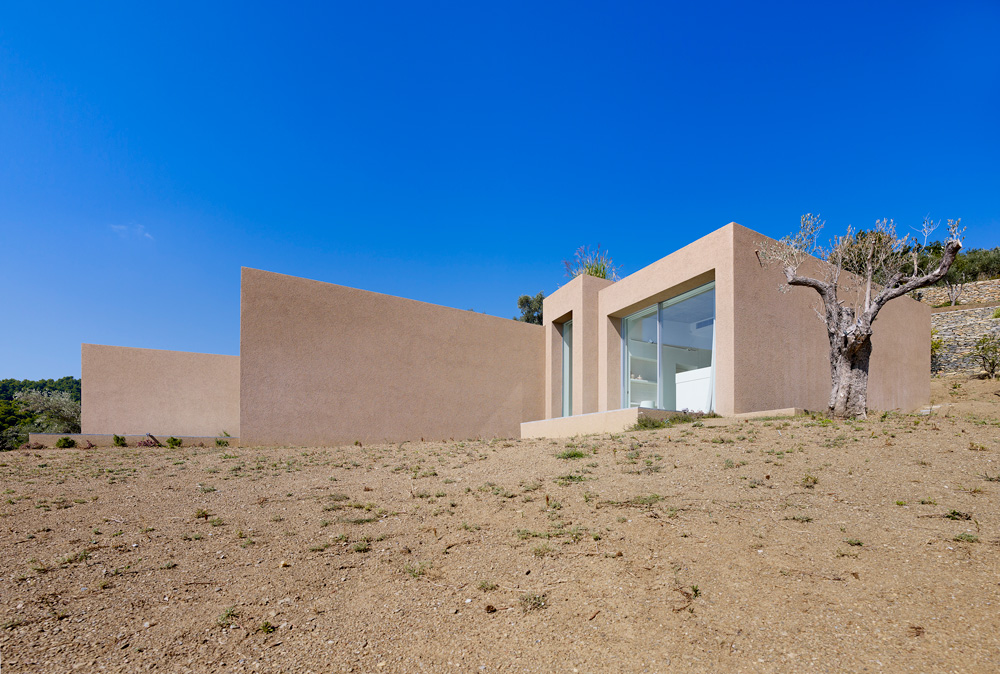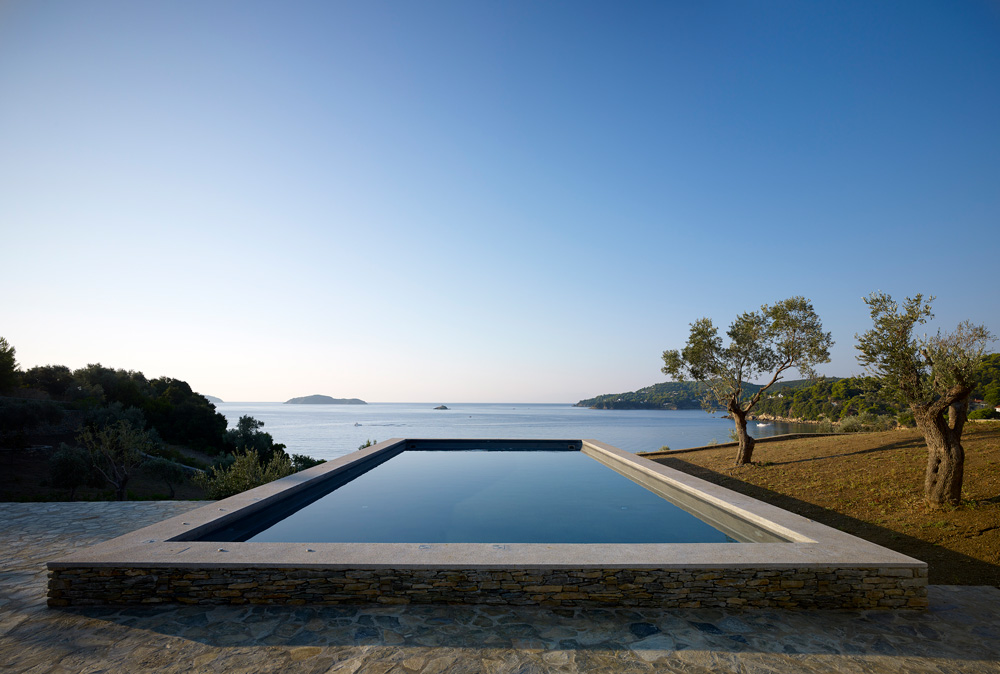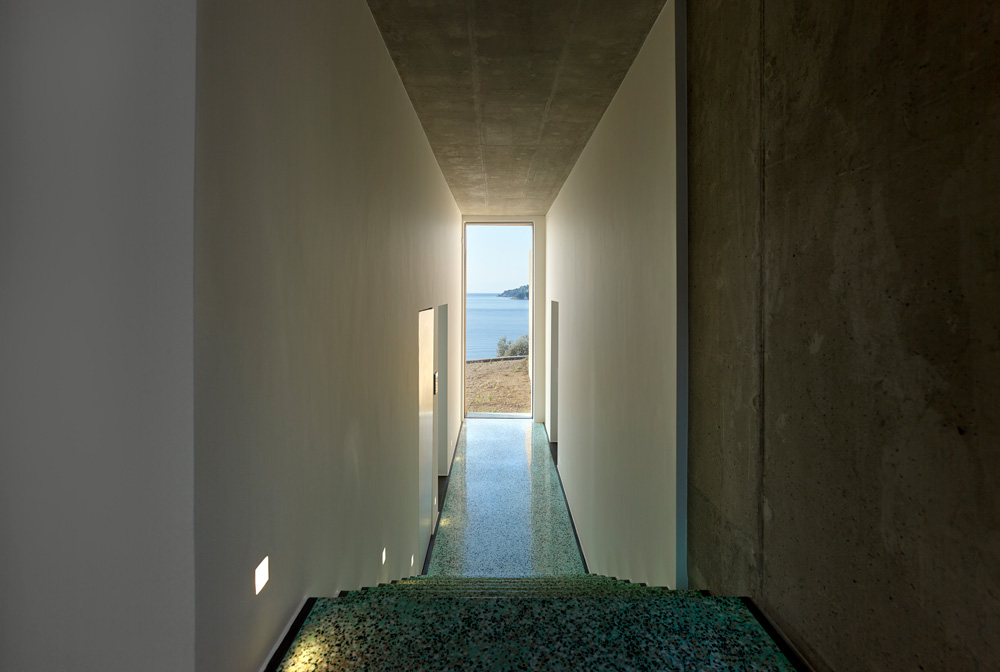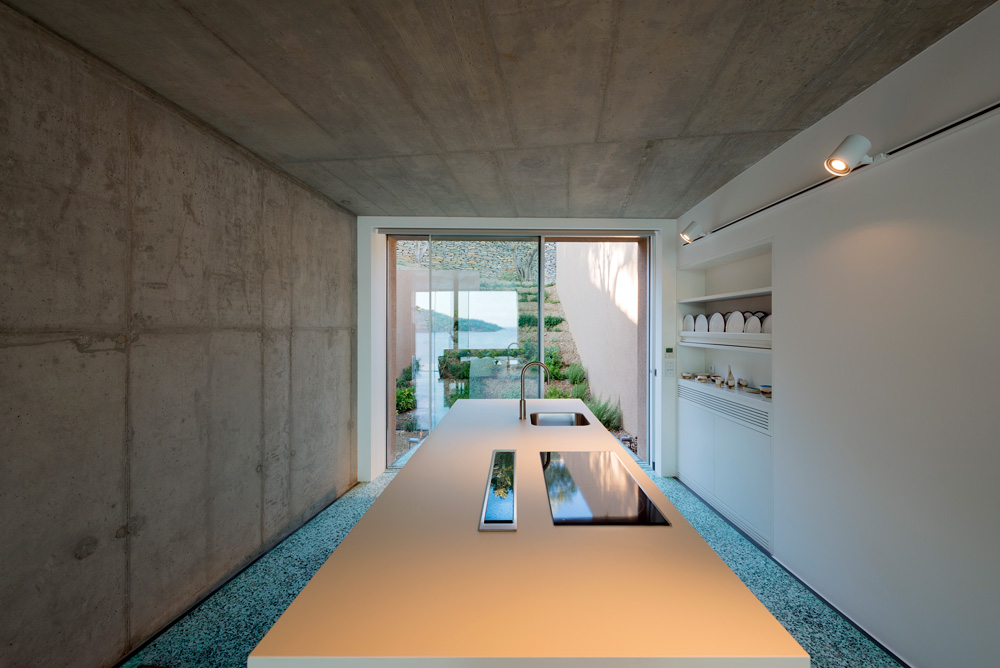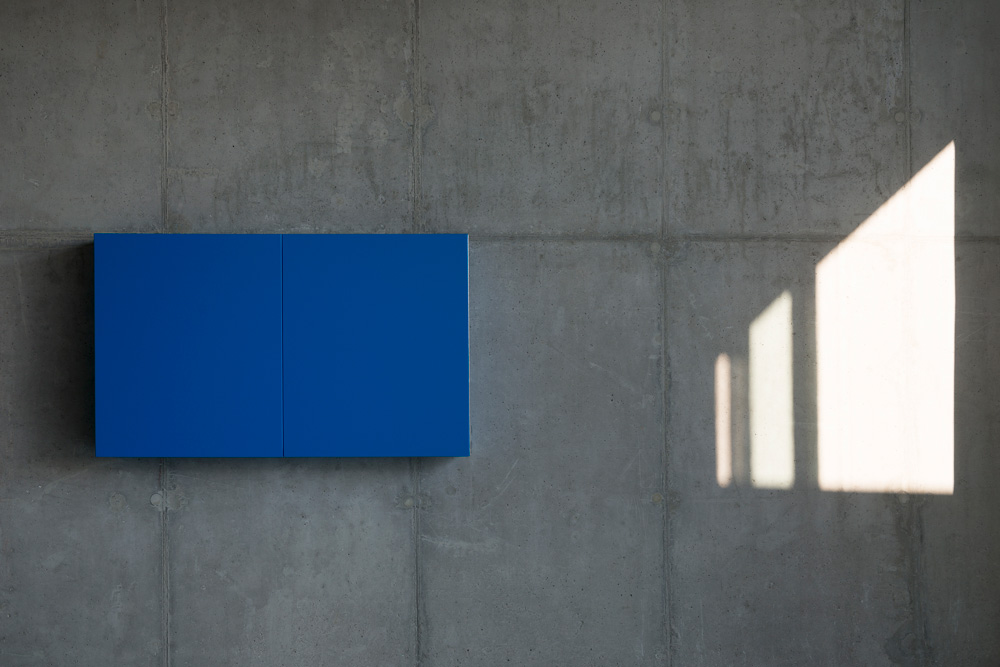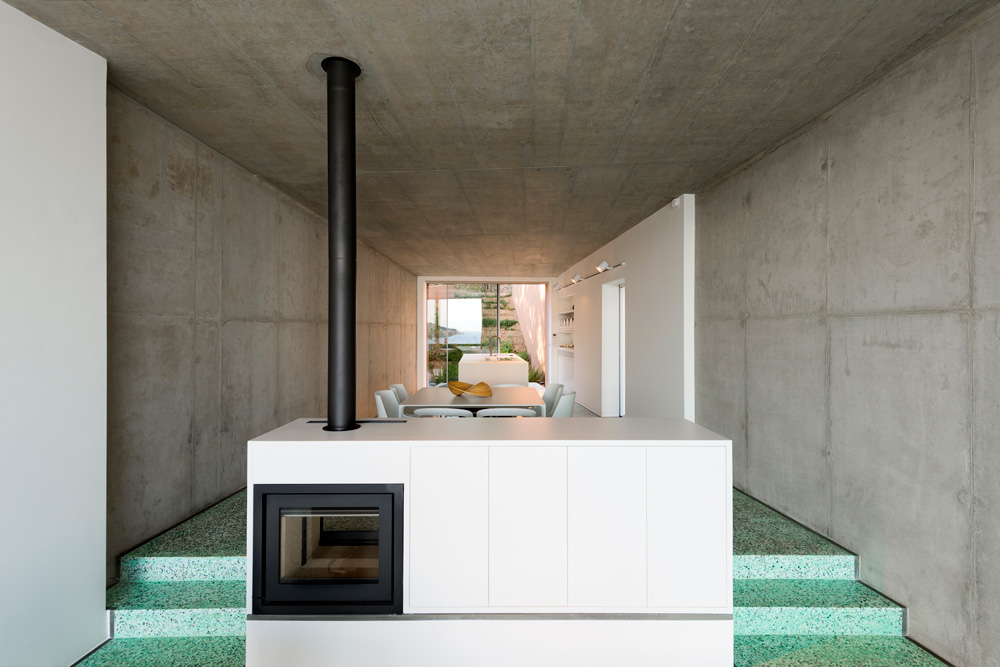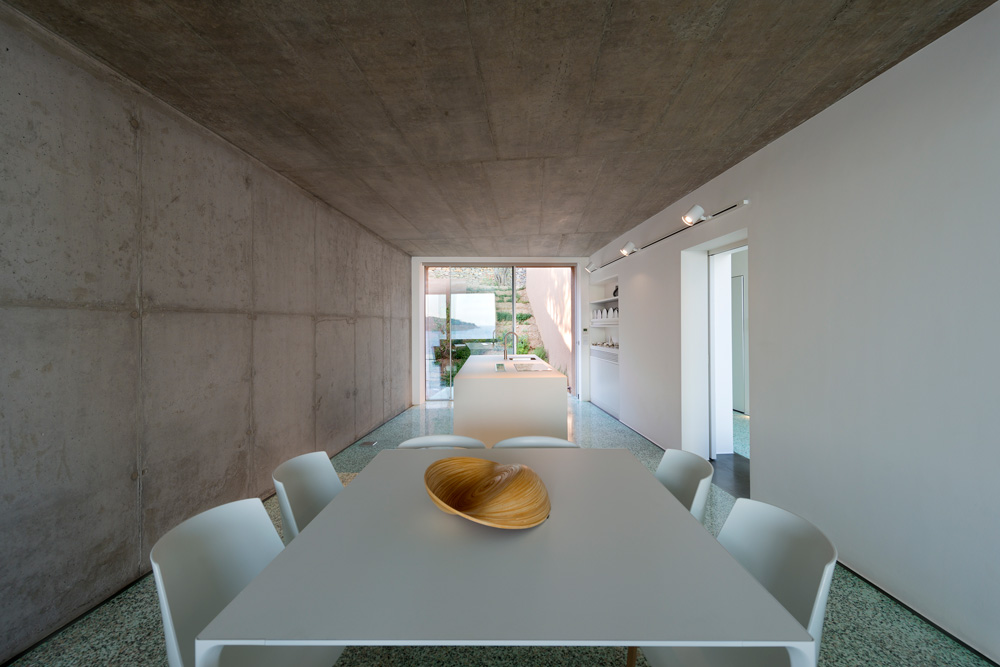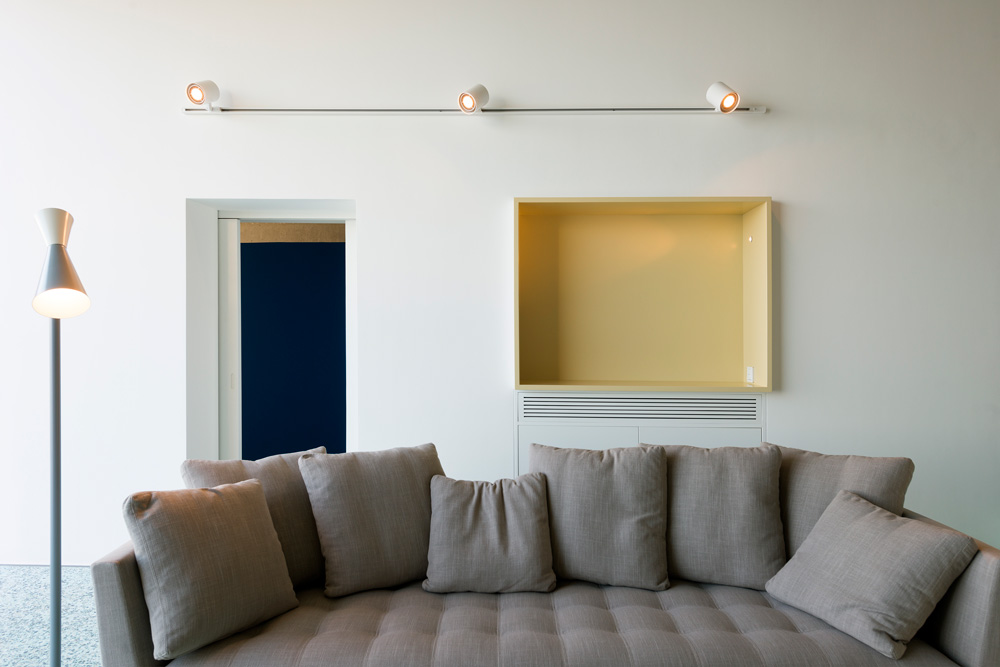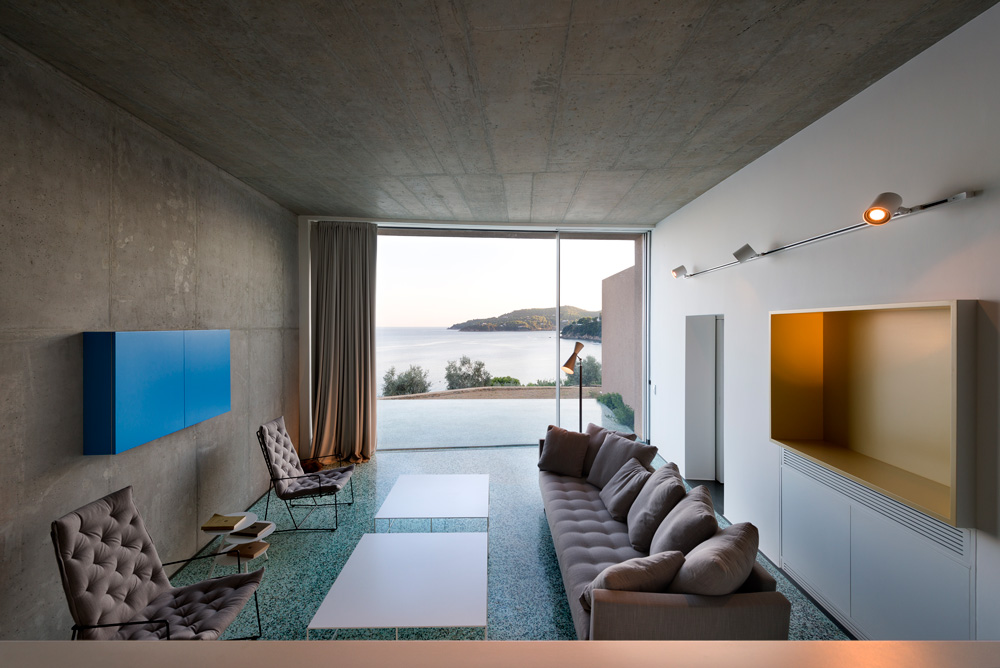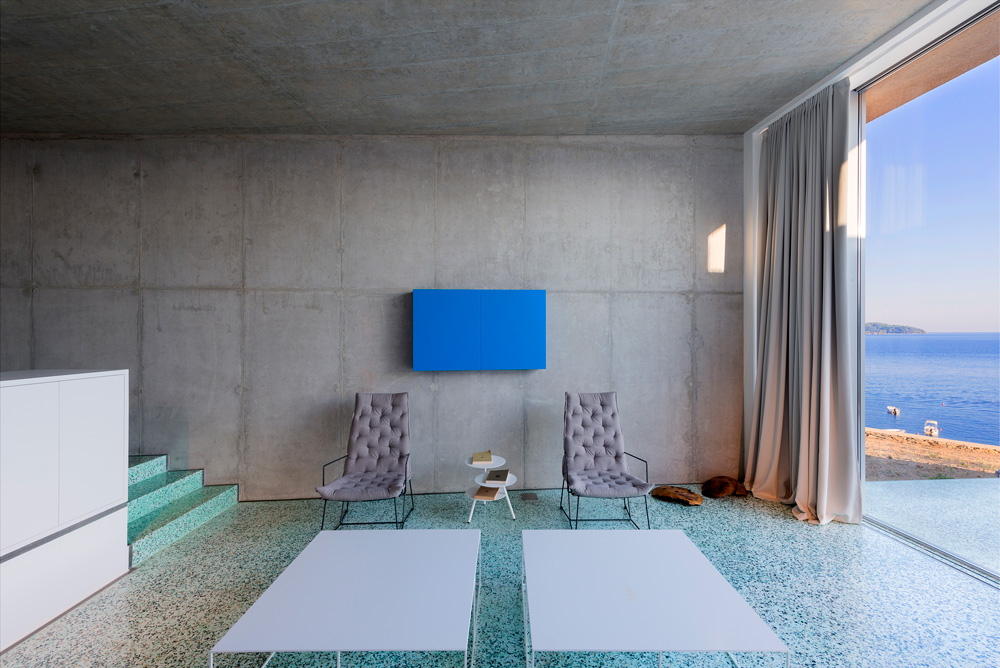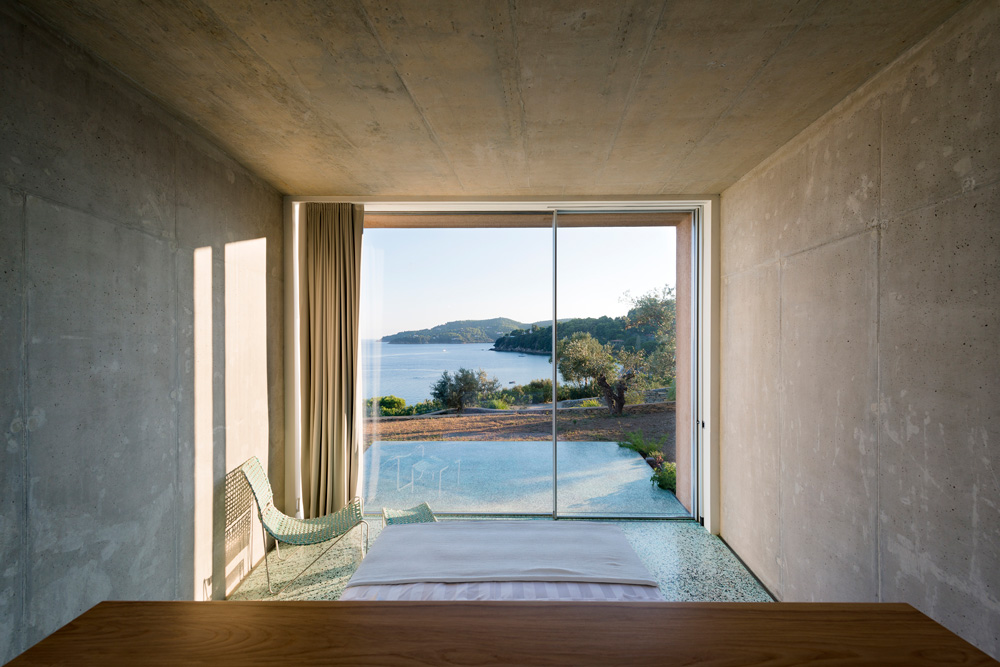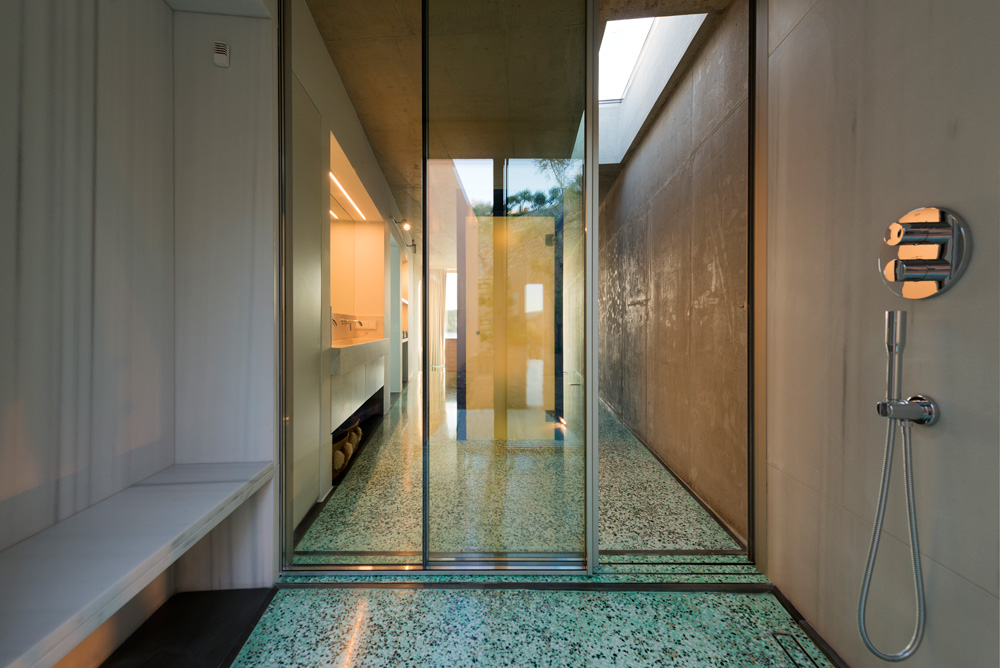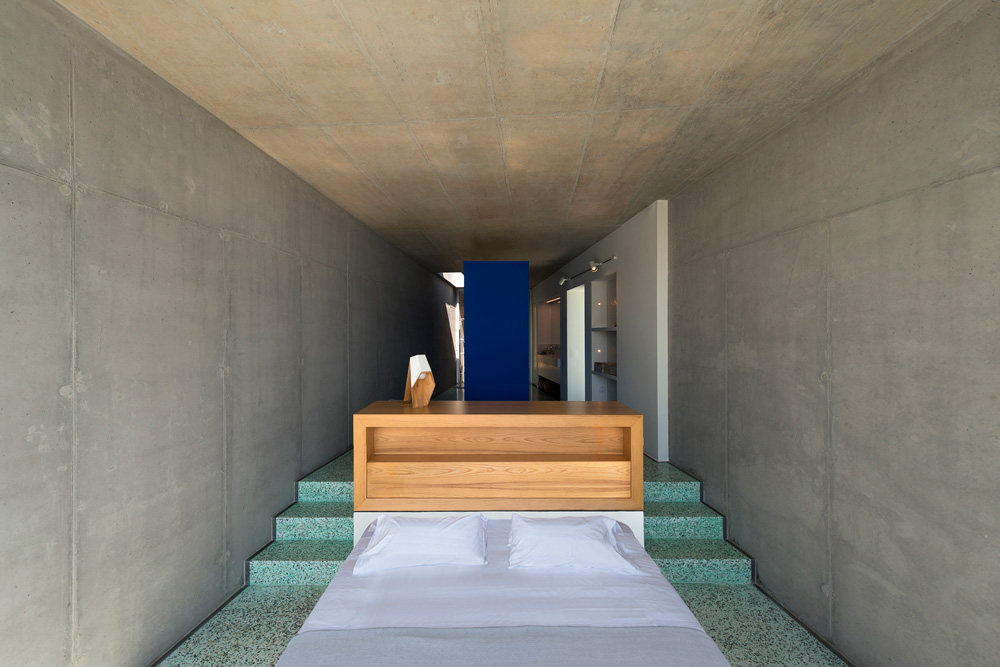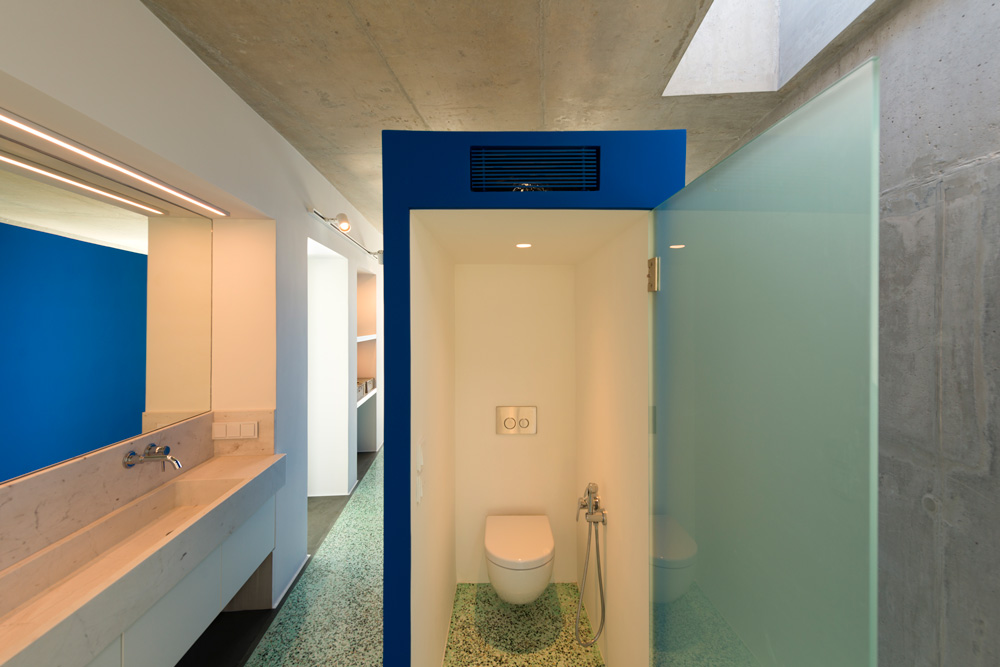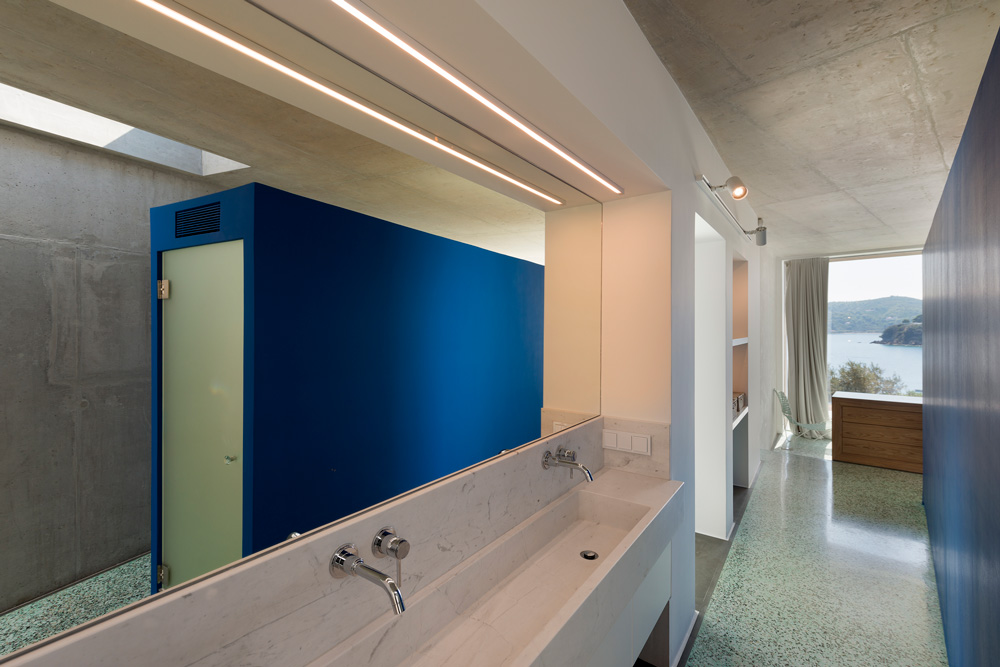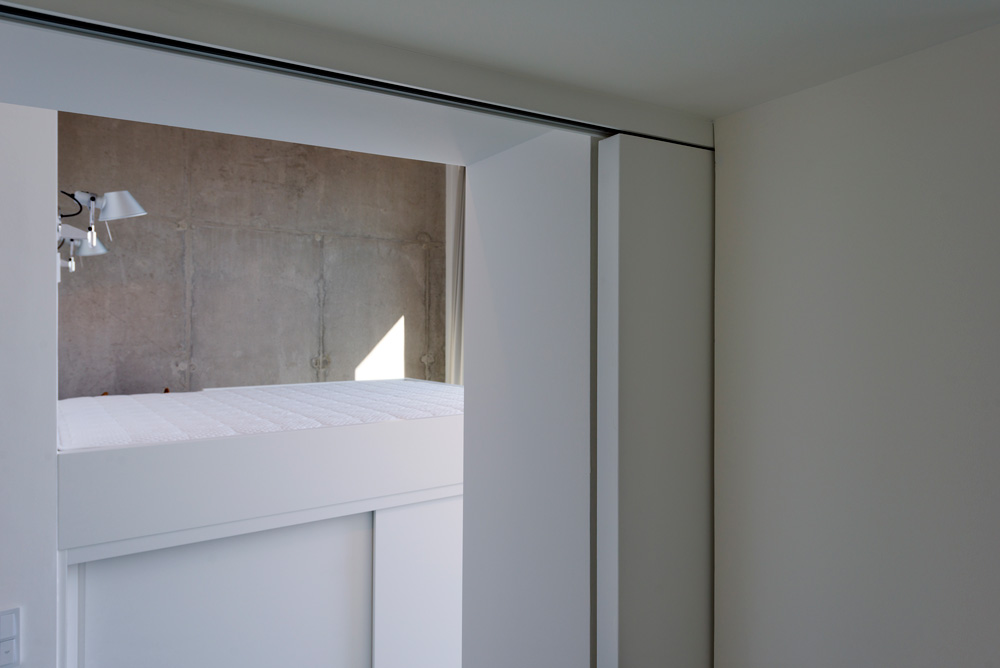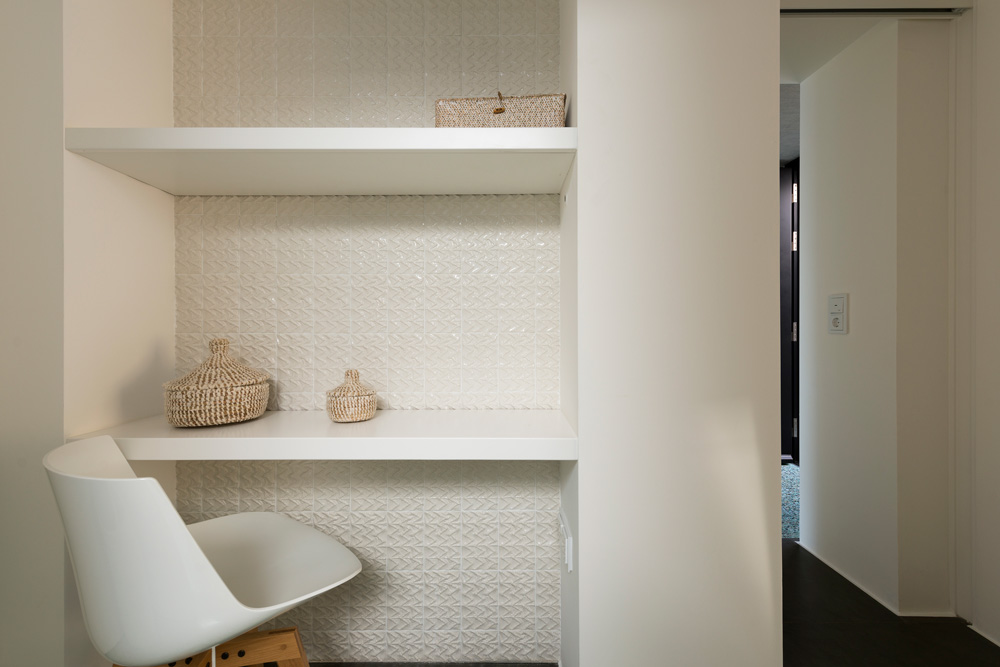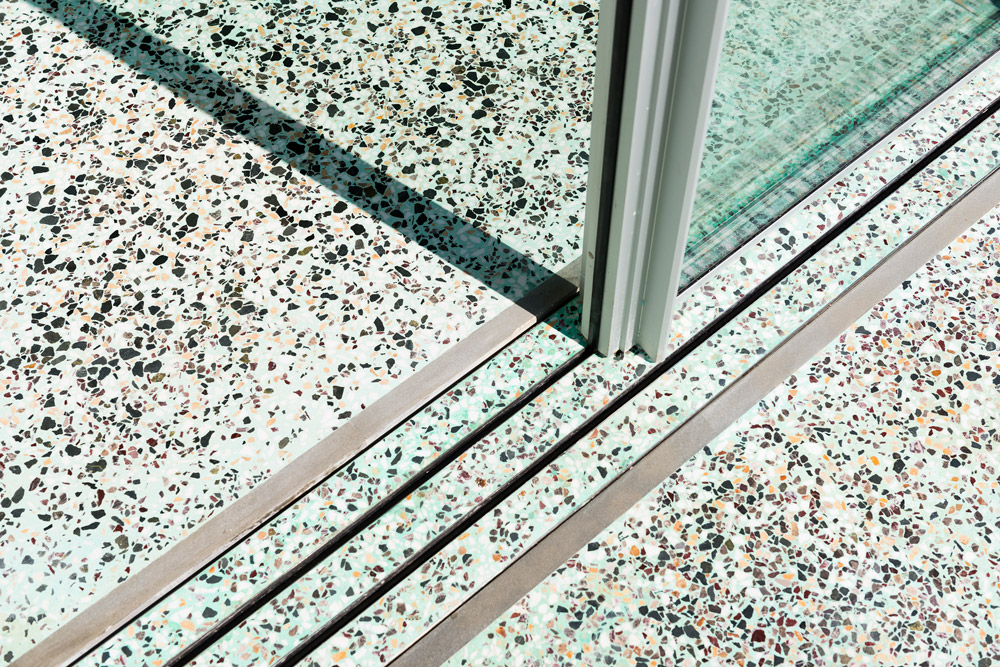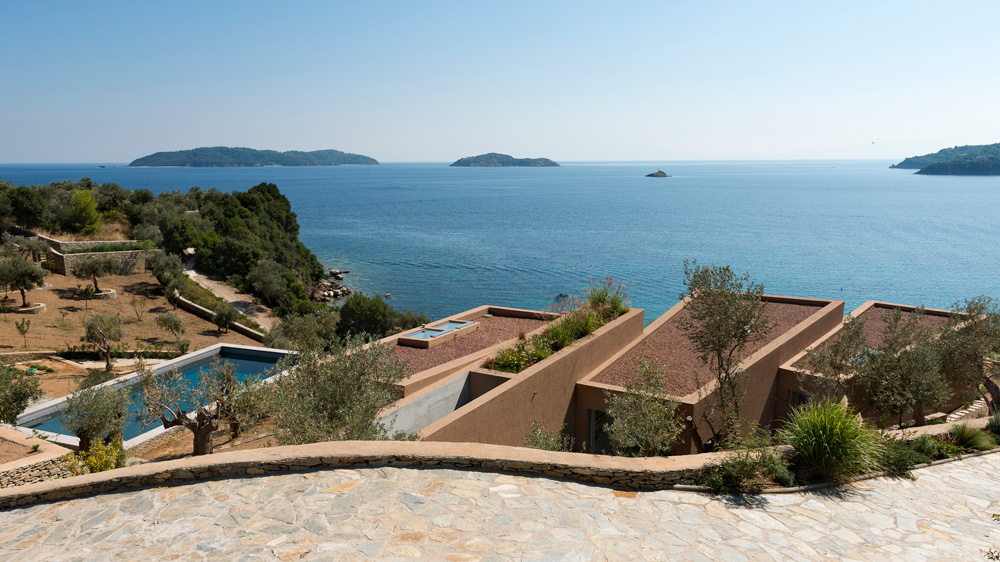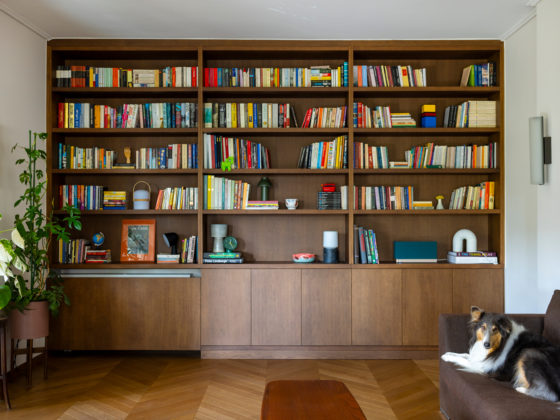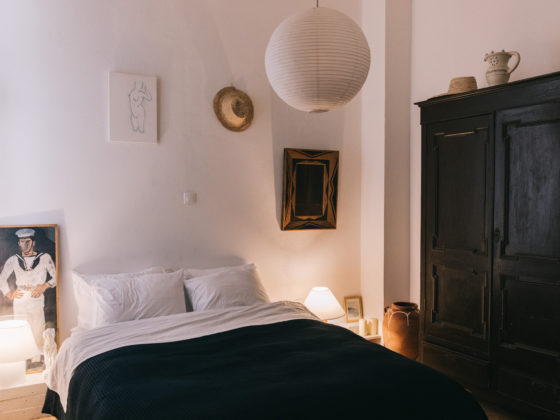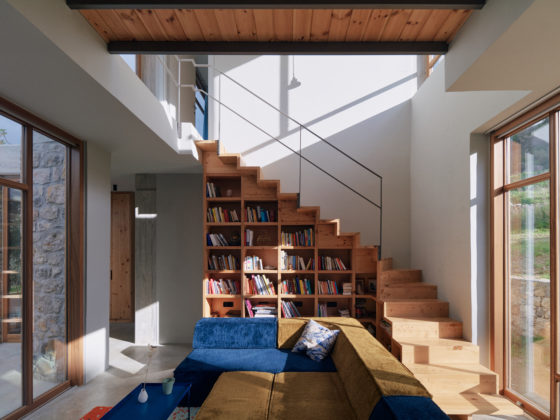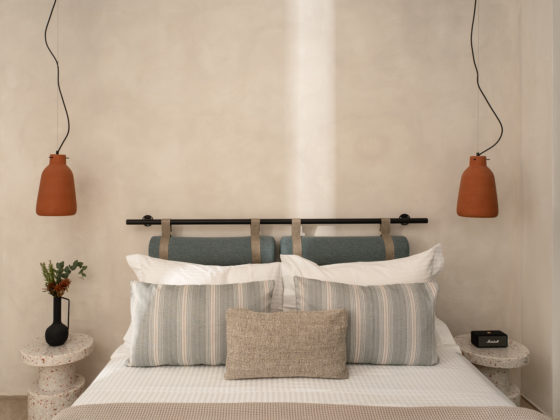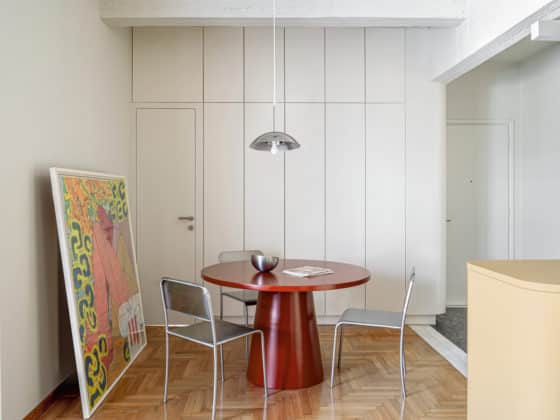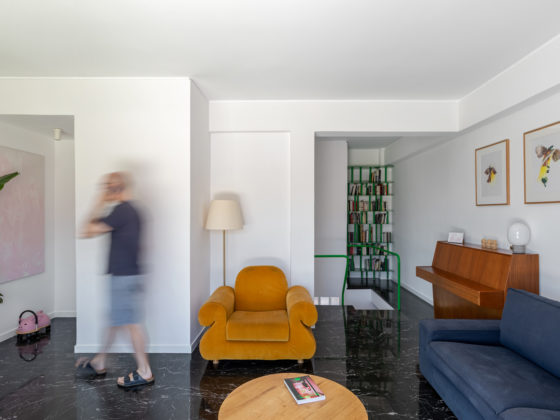A sloping triangular site facing the sea. A house as a series of adjoining rooms. Retaining walls, so common in the surrounding Mediterranean landscape. Here they contain the land and the living. Volumes at different elevations follow the topography. Each with a dedicated program. Enter from the top of the site. There, a stair continues the slope into the house. The first experience upon entering: A house as a viewing apparatus onto the sea.
Living spaces at the center with bedrooms on either side. Together and alone, very close. No corridors. Rooms focus on a southern frame. Contemplating the changing sea. A smaller one to the north, opens up to the slope. Breeze passes through them, cross ventilating. Volumes are in shear. Terraces have privacy even if volumes are adjoining.
Sliding doors through the double walls. A passage from one space to the next. Grey marble at each threshold notes this “cut”. A cut through the solid concrete walls. Large thermal mass. East and west there’s a dirt road and neighboring buildings. East and west elevations without openings. A barely visible configuration of spaces. Interior privacy with maximum views towards the sea. Shielding from the sun’s heat.
“Aggregate”, a generator of form and materiality. Aggregation of rooms, aggregate in the raw concrete walls, in the terrazzo floor, roofs filled with gravel and plants. In the interior when adjoining walls double up: the everyday is carved within them; desks, a bathroom sink, shelving and artwork display. Other custom furniture arranged along the centerline. A dynamic sequence. Bespoke tiles on some walls (made by Candida Wigan in Portugal) draw from traditional patterns. A fabric discovered in local history books. Materials used here are very familiar in older Greek residential interiors. Terrazzo floor- throughout the house- marble and plaster render. They are used in spaces, forms and combinations that are not so familiar.
